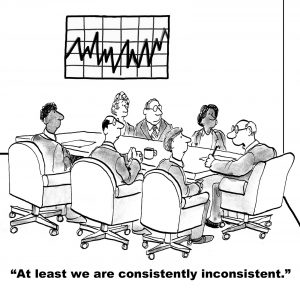Placers Staffing Presents: Resume Red Flags
Whether you’ve been job hunting for a while now or you’ve just started looking, you know your resume is a powerful tool that can either help or harm you during your search. Many people have no idea their resumes are often read by computers (applicant tracking systems) and discarded after a mere 6 seconds (it’s true!). Likewise, many job seekers would be surprised to know their resumes are sending red flags to recruiters. Some red flags can cause hiring managers and recruiters to pass you over without a second look. What should you look for and how can you fix these problems, making your resume more attractive to employers?
Here are some of the warning signs hiring managers look for, and tips on how to fix them:
Your resume doesn’t meet the job requirements:

In today’s world, we know keywords are, well, key. Every time you send out your resume, you should be changing the verbiage to match the job. Review the job posting and make sure your resume has the exact words the company wants. Skip the ‘Objective’ section and list 3 to 5 bullet points at the top that speaks to the job in question. You don’t want the recruiter or hiring manager to have to hunt through your resume—because they won’t. Typically, recruiters spend less than 6 seconds looking at a resume before they move on.
Dates of Employment:

It may sound silly, but make sure your employment dates are correct and consistent. If you list the years for one position (2014-2017) but the month and date for another (March 2010 through April 2014) it looks unorganized, and to a recruiter, that’s a reflection of you. Make sure to explain overlapping dates (maybe you were freelancing or working two jobs) as well as any gaps. Finally, don’t lie about employment dates. Recruiters are trained to cross-check using several different tactics. Any inconsistencies could jeopardize your chances of landing an interview.
Job hopping:

Employers see “job hopping” as a major red flag. Why? Well, it can be perceived that you may be unsure about your career path, you’re not using proper judgment when choosing a position, or you haven’t been able to maintain a role for an extended period. This is one of the most common reasons employers reject resumes. Businesses do not want to spend money and time hiring and training someone who isn’t a long-term solution. What can you do? If you are a contractor, make sure to group those contracting positions together, and explain on your resume that those were contracting positions. If you accepted short-term roles, you can leave them off your resume, but be prepared to explain the gap in employment. If you were laid off from a company, explain why. You should have an answer for every question that pertains to your job history.
Inconsistencies online:

Make sure you are representing yourself consistently across all online platforms. You want your resume, your LinkedIn profile, and any other websites your prospective employer can access (like a blog, an online portfolio, social media, or another online hiring site) to show you in the same light. When recruiters see inconsistencies in your online personas, it raises suspicion. Limit the negative variables and increase your chances of a locking down an interview by updating your online accounts.
Not tailoring your resume to the job description:

You should be tweaking your resume every time you apply for a different position. If not, you’re sure to leave out keywords an applicant tracking system, or an HR manager is looking for. Edit your resume every time to make sure it speaks to the job you want!
Correct these red flags today, and you’ll begin to see positive results.
Have a suggestion or a question? Send us a message! We’d love to hear new ideas! Looking for a job change? Contact us today!
